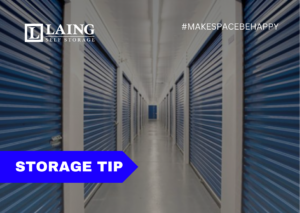
If you’re living in Broome County, New York, Self-storage units are an excellent solution for decluttering, storing seasonal items, or even organizing your life during a move. However, the key to making the most of your space and keeping your belongings safe and accessible is packing efficiently. When done right, packing a self-storage unit can save you money, time, and stress in the long run. Here’s a guide on how to pack your self-storage unit effectively.
1. Start with a Plan
Before you even begin packing, take some time to think about the purpose of the storage and how often you’ll need access to your items. Do you need to retrieve things frequently? Will some items need to stay in long-term storage? Organizing your storage plan ahead of time can guide how you pack and arrange things in the unit.
2. Choose the Right Storage Unit Size
Choosing the right size of storage unit is crucial for maximizing efficiency. Too big, and you’ll be paying for unused space. Too small, and you’ll end up packing things in a cramped, disorganized way. Self-storage facilities often offer a range of unit sizes, so take inventory of your items and select one that will fit everything comfortably. Many facilities also offer a “unit estimator” tool online to help.
3. Use Uniform Boxes
Using uniform boxes of similar sizes allows for easier stacking and prevents awkward gaps. When you use different-sized boxes, you risk instability when stacking, which could cause the boxes to tip over or break. Stackable boxes also help make the most of vertical space, so fill as high as your unit’s height allows. Label each box clearly with its contents and destination room to make retrieval easier later.
4. Disassemble Large Furniture
For large items like beds, desks, and tables, disassembling them can save a ton of space. Not only will it allow you to store things more efficiently, but it will also protect your furniture from damage. Keep screws and smaller pieces in labeled ziplock bags taped to the furniture pieces themselves, so you won’t waste time hunting for parts when you need to reassemble.
5. Use Furniture as Storage Space
Maximize space within your furniture by using it as a container. For example, drawers and cabinets can be packed with smaller items like books, clothes, or office supplies. Not only does this free up more space in your storage unit, but it also keeps your items in one place and reduces the risk of losing them.
6. Pack Heavier Items at the Bottom
When stacking boxes or bins, always place the heaviest items at the bottom to avoid crushing lighter, more fragile items. This layering method will help with stability, making the unit less likely to collapse or cause damage when items are moved. As a general rule, heavier boxes should be packed closer to the door so that they are easier to access when needed.
7. Leave a Pathway
It’s important to leave an aisle or pathway in your storage unit, especially if you anticipate needing to access certain items regularly. Create a path that leads to the back of the unit and allows you to easily get to any items without having to move everything around. This saves time and frustration when you’re looking for something specific.
8. Avoid Overpacking Boxes
While it might be tempting to stuff a box to the brim, overpacking can lead to boxes breaking open or becoming too heavy to carry safely. Aim to keep boxes at a manageable weight and avoid overloading. Packing peanuts, bubble wrap, or even clothing can serve as additional cushioning to protect fragile items inside.
9. Use Clear Plastic Bins for Visibility
For items you need to find quickly or want to keep in good condition, opt for clear plastic bins instead of cardboard boxes. These bins make it easier to see what’s inside without having to open everything. It’s especially useful for smaller items or seasonal decor you might need to access during specific times of the year.
10. Utilize Vertical Space
Don’t neglect the vertical space in your unit! Use shelves if available, or stack boxes up to the ceiling to free up more floor space. Tall items, like ladders or artwork, should be placed upright along the walls to save room. Just be sure that everything is packed securely and won’t fall over.
11. Protect Fragile Items
When packing fragile items like glassware, mirrors, or electronics, use ample padding and wrap them securely in blankets, towels, or bubble wrap. You can even use cardboard dividers for extra protection. Keep fragile items toward the front of the unit so they can be easily accessed without moving other, heavier items around.
12. Consider Climate Control for Sensitive Items
Binghamton always has crazy weather, so If you’re storing items that are sensitive to temperature or humidity (like antiques, electronics, or important documents), consider opting for a climate-controlled storage unit. These units maintain a consistent temperature and humidity level, preventing damage due to extreme conditions. If temperature controlled storage is what you’re in search of, Laing Self Storage can accommodate.
For temperature controlled storage or non temperature controlled storage call 607-775-9776 or visit www.laingselfstorage.com. We have locations in Endwell, Endicott, Binghamton, & Conklin.
